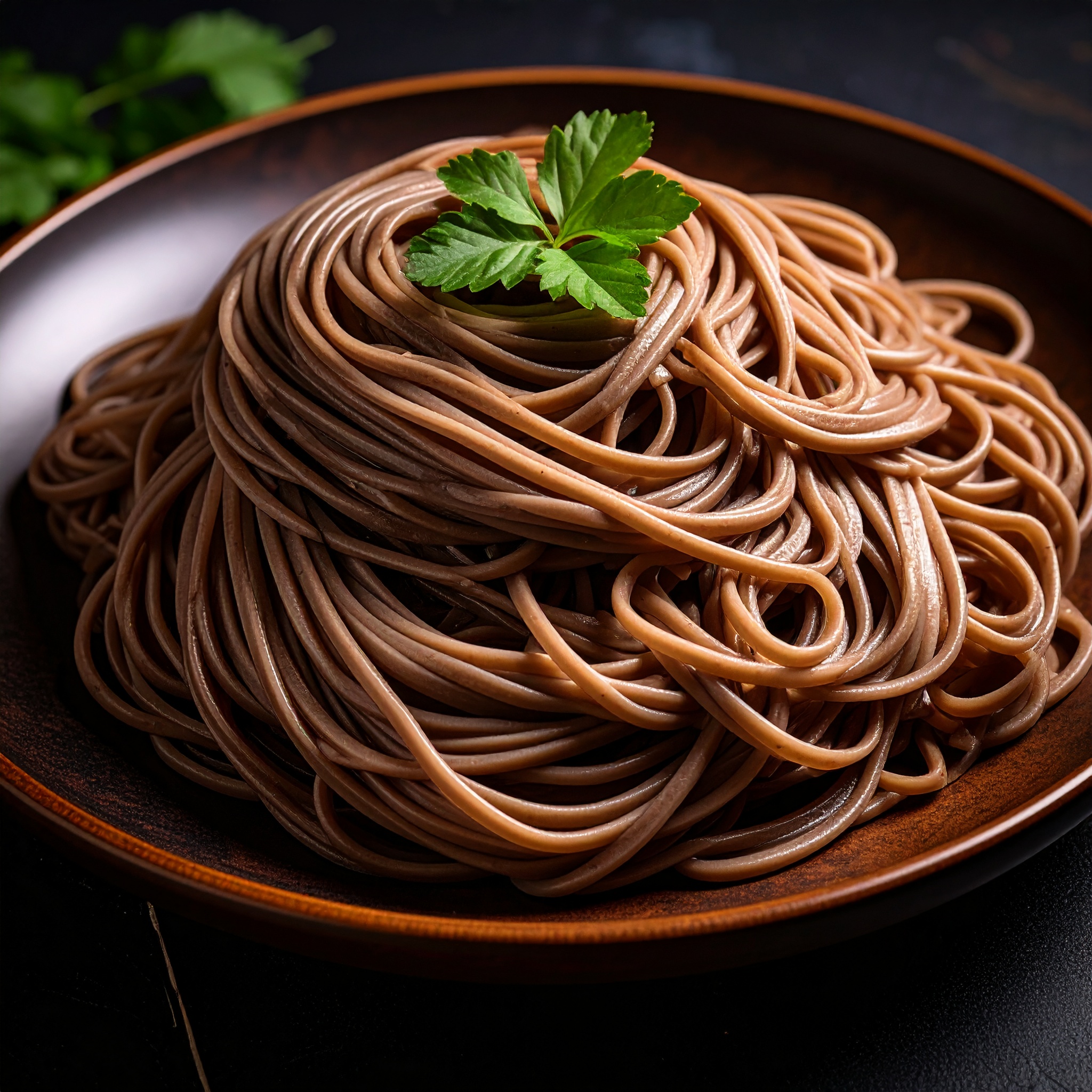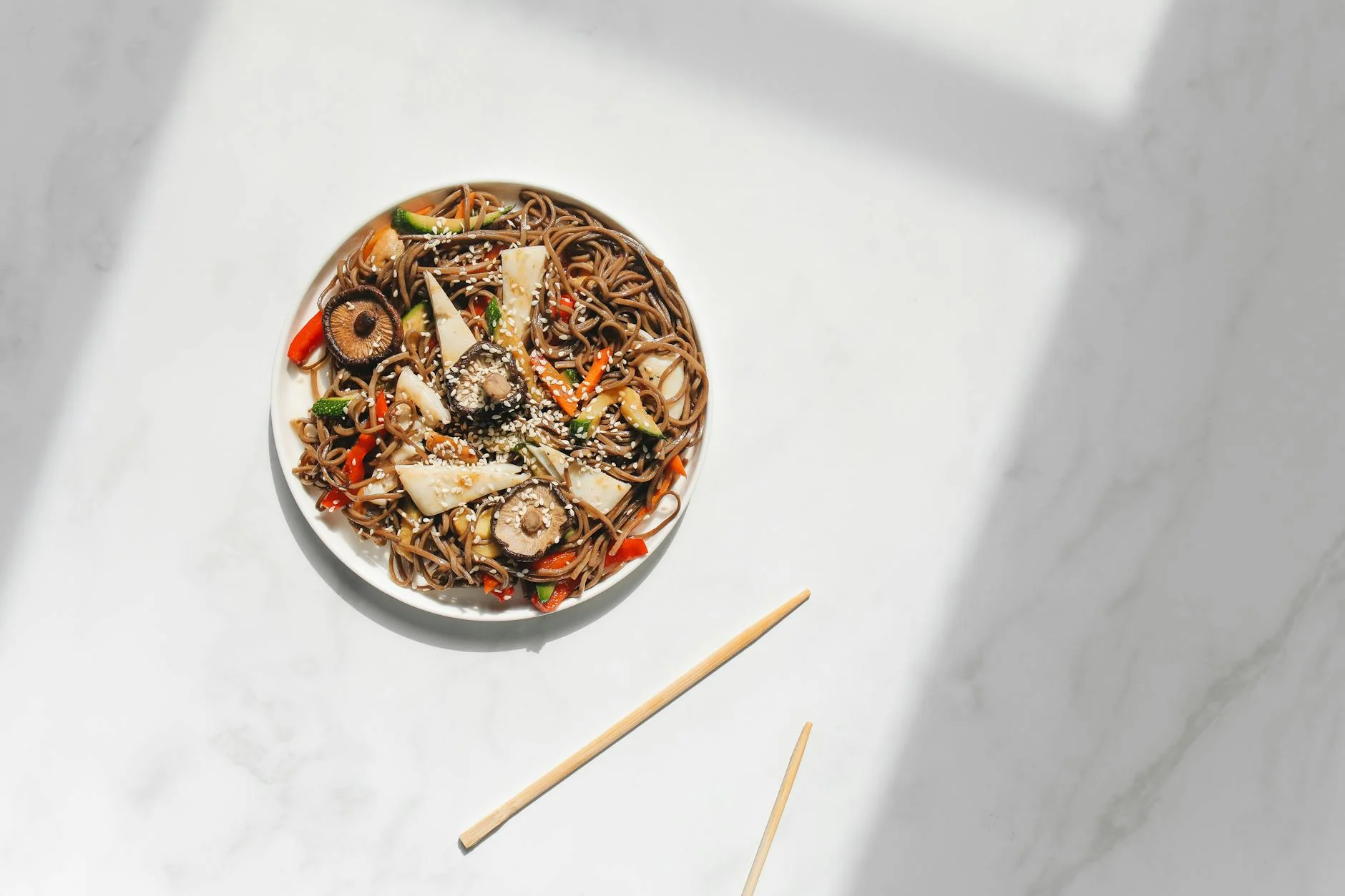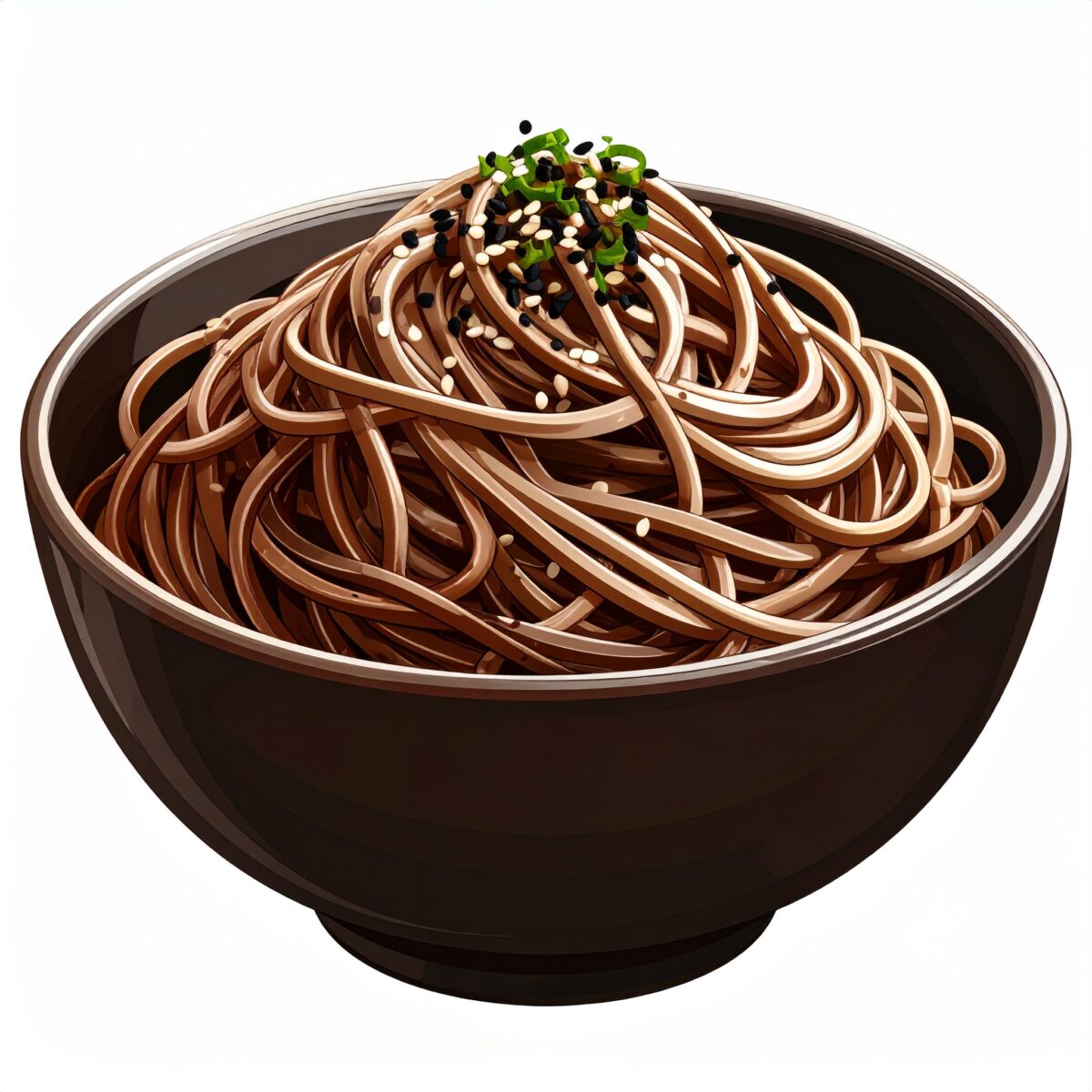Within Japan’s rich noodle tradition, soba (buckwheat noodles) stands out for its deep regional character—each locale preserving its own methods and rituals. Among them, Izumo Soba, rooted in the San’in region of Shimane Prefecture, emerges as a culinary heritage that speaks of the land itself. It carries the earthy fragrance and rustic vitality that remind us of soba’s primordial essence.
The hallmark of Izumo Soba lies first in its color and aroma. Unlike most soba, which is made using only the core of the buckwheat grain (seihiki), Izumo Soba is ground whole, husk and all. This results in a darker, ash-grey noodle that releases a deeply nutty aroma and natural sweetness, underscored by a subtle bitterness. Each bite conveys a visceral sense of the plant’s energy—a connection to the soil from which it was born.
Equally distinctive is its method of presentation, notably the traditional warigo style. Here, soba is served in stacked circular lacquered boxes—often in sets of three or five. Each tier holds a portion of noodles, and as diners progress, they pour condiments and sauce from top to bottom, creating an evolving flavor experience. With every layer, the taste deepens, and a new miniature narrative unfolds—an elegant sequence that honors both form and flavor.

The distinctive warigo style of serving Izumo Soba is believed to have originated as a practical meal for samurai and travelers during the Edo period—a portable, stackable form suited for life on the move. This historical nuance highlights soba’s dual identity: both a humble daily fare and a culinary thread woven into Japan’s culture of travel and mobility. Through soba, people traversed landscapes, forged connections, and developed a cuisine deeply embedded in the wisdom of lived experience.
Another defining trait of Izumo Soba lies in its historical and environmental roots. In a region dominated by mountains and relatively unsuited for rice cultivation, resilient grains like buckwheat and millet flourished. Buckwheat, with its short growing season and adaptability to poor soil, became a staple that sustained life in colder, more rugged terrain. As a result, soba was not just a dish served in restaurants—it was a vital component of home cooking and community rituals.
In Izumo, soba is passed down not only as an everyday meal but also as a ceremonial dish served during New Year’s celebrations, weddings, and memorial services. It is equally a daily food, lovingly handed down from parent to child—a tangible expression of continuity and care. This duality is central to the local soba culture: a nourishment of both body and spirit.
Every aspect of Izumo Soba—from the variety of buckwheat grown and the timing of its harvest to the method of milling and hand-kneading—reflects a body of knowledge shaped by generations. It is not merely a culinary technique, but a living wisdom born of the land. The region’s soft water and dry air have shaped a unique approach, refined over time by artisans who have harmonized their craft with the environment.

At the heart of Izumo Soba lies a reverence for the noodle itself—its texture, its aroma, its innate character. Unlike the more common dipping method, this soba is typically served in a bukkake style, with the sauce gently poured over the noodles. This approach enhances the soba’s natural viscosity, elasticity, and subtle flavors, allowing the full expression of the buckwheat to be appreciated without distraction. The accompanying condiments—grated daikon, scallions, momiji oroshi, dried seaweed, and shaved bonito—are chosen for their restraint and harmony. They are not there to embellish, but to reveal. The entire experience is defined by a refined simplicity: an elegance of omission, rather than addition.
This philosophy of “subtraction” is a cornerstone of Japanese culinary tradition as a whole. It is the art of restraint—bringing out the best of each ingredient without overpowering it, leaving space for nuance, and allowing flavor to linger quietly. Izumo Soba distills this sensibility with striking clarity: modest in appearance, yet deeply resonant on the palate.
In recent years, Izumo Soba has garnered attention not only across Japan but also internationally. This growing appreciation stems from a shift in perception—soba is increasingly seen not just as a noodle, but as a cultural expression. It encompasses agriculture, seasonal rituals, traditional tableware, architectural spaces, and everyday life. More and more people are awakening to the realization that Izumo Soba represents an integrated lifestyle and worldview, expressed through food.
Yet to truly understand Izumo Soba, one must experience it in situ. No replication can match the authenticity of enjoying it within the air and atmosphere of its origin. The soft scent of the local climate, the tactile richness of the lacquered vessels, the quiet serenity of a traditional soba house, and the texture of noodles boiled in the region’s natural spring water—all these elements converge to complete the Izumo Soba experience.
A single bowl of soba encountered during a journey can become a vessel of memory, a silent dialogue with the culture of the land. Izumo Soba stands as a quintessential example of this phenomenon—a living edible heritage that continues to speak quietly yet profoundly to the hearts and palates of those who seek authenticity, connection, and depth.




